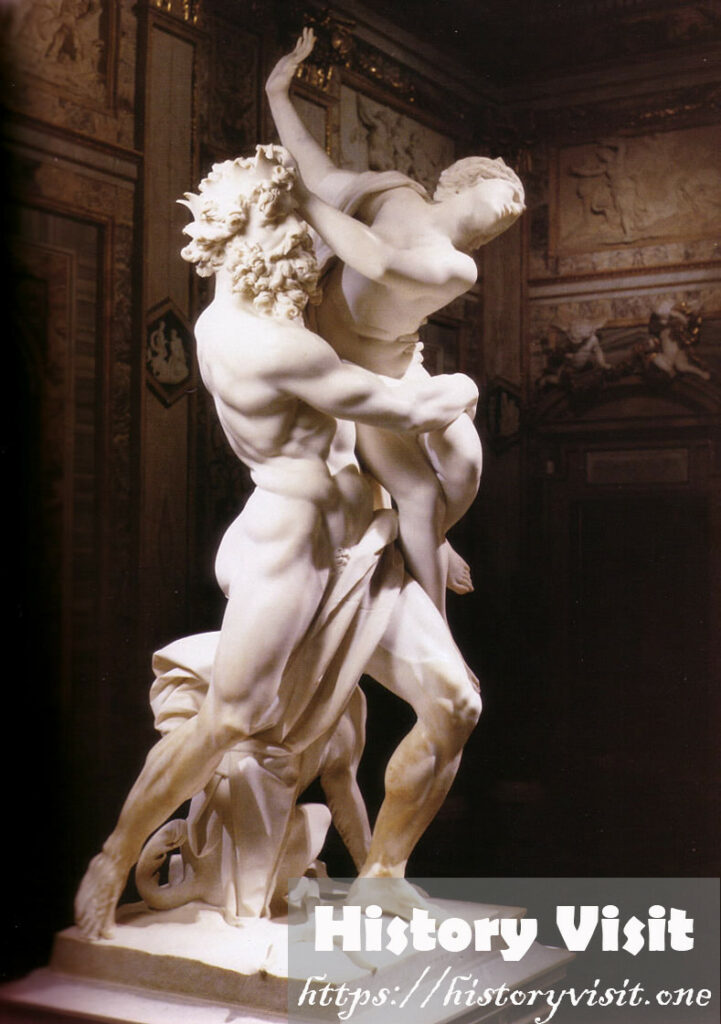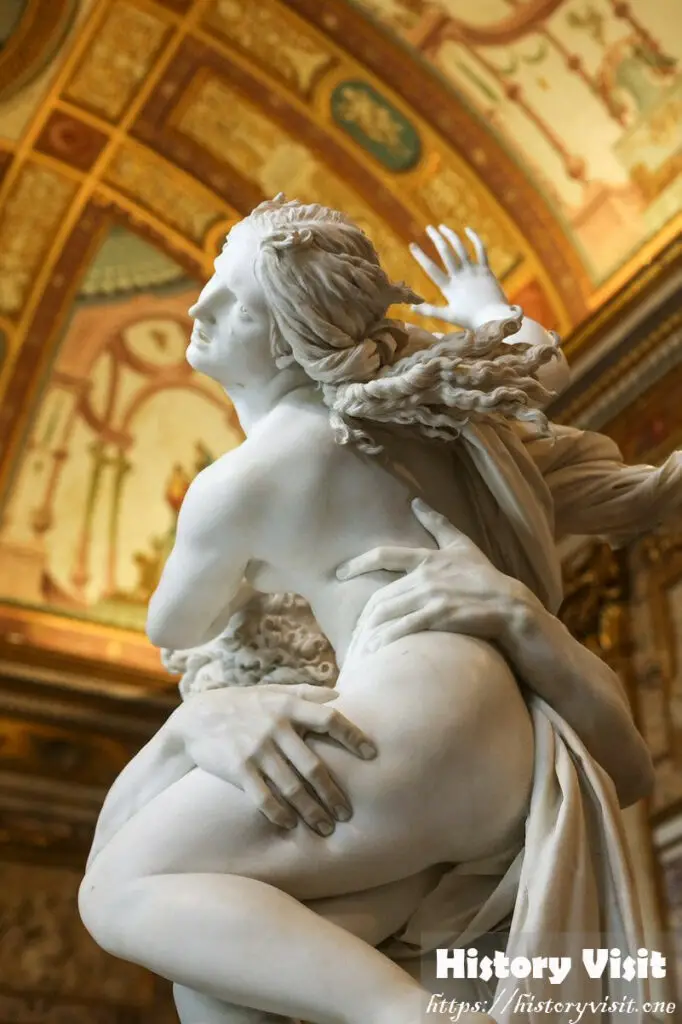Gian Lorenzo Bernini’s Magnum Opus: “The Abduction of Proserpina” (1622)

Gian Lorenzo Bernini, the virtuoso of Baroque art, etched his name into the annals of sculptural brilliance with the creation of “The Abduction of Proserpina” between 1621 and 1622. This marble marvel, residing within the Borghese Gallery in Rome, encapsulates Bernini’s unparalleled ability to infuse stone with life, narrating the mythological saga of Pluto’s forceful abduction of Proserpina. Beyond its mythic origins, the sculpture unveils Bernini’s genius in rendering dynamic compositions, eliciting emotional intensity, and transforming cold marble into a visceral narrative.
Mythological Threads: Pluto, Proserpina, and the Underworld Beckons
At the core of “The Abduction of Proserpina” lies a timeless tale steeped in Roman mythology. Pluto, the enigmatic god of the underworld, captivated by the ethereal beauty of Proserpina, seizes the opportunity to make her his queen. The myth unfolds as Pluto, with unrelenting desire, forcefully abducts Proserpina, spiriting her away to the depths of the underworld. The narrative pulsates with themes of love, loss, and the transformative journey between life and death.
Dynamic Composition: The Frozen Movement of Myth
What distinguishes this masterpiece is its dynamic composition, a hallmark of Bernini’s work. The sculpture captures a climactic moment in the myth — Pluto’s fingers plunging into Proserpina’s delicate flesh as he drags her inexorably towards the subterranean realm. The sense of motion, frozen in stone, draws viewers into the throes of the narrative, creating an immersive experience that transcends time.
Marble Alchemy: Flesh, Fabric, and the Illusion of Life
Bernini’s sculptural alchemy transforms the rigid constraints of marble into living, breathing entities. Proserpina’s flesh, carved with a delicate touch, exudes softness and vulnerability. The fabric of her drapery appears weightless, caught in a momentary dance. Even Pluto’s veins, meticulously carved, pulse with vitality, defying the inherent nature of the stone medium. Bernini elevates marble from a lifeless substance to a conduit of emotion, blurring the lines between art and life.
Faces of Emotion: The Silent Screams of Proserpina and Pluto’s Unyielding Determination

The expressive faces of Proserpina and Pluto inject a profound emotional layer into the narrative. Proserpina’s visage contorts with anguish and shock, her mouth poised in a silent scream, and her eyes wide with terror. In stark contrast, Pluto’s expression is one of unwavering determination and desire, encapsulating the tension and intensity of the abduction. The juxtaposition of these emotional extremes intensifies the emotional resonance of the sculpture.
Play of Light and Shadow: Bernini’s Signature Technique
Bernini’s mastery over light and shadow, a signature of his artistic technique, enriches the dramatic impact of the sculpture. The interplay of light accentuates the tension in Proserpina’s muscles, the texture of her flowing hair, and the desperation in her eyes. The shadows cast by Pluto’s hand deepen the emotional weight of the scene, creating a chiaroscuro effect that adds layers of complexity and nuance to the narrative.
Spatial Awareness: Sculpture as a Dynamic Experience
Central to Bernini’s brilliance is his profound understanding of spatial awareness. “The Abduction of Proserpina” is a dynamic experience that unfolds as one moves around the sculpture. The spiraling forms invite exploration, revealing new details and perspectives from every angle. This thoughtful consideration of space invites the audience to participate actively in the narrative, engaging with the sculpture in a deeply immersive manner.
Legacy of “The Abduction of Proserpina”: Beyond Marble and Myth
Beyond being a static sculpture, “The Abduction of Proserpina” serves as a living testament to Gian Lorenzo Bernini’s ability to transcend the limitations of his medium. Its mythological narrative resonates with themes that traverse centuries — the struggle between life and death, desire and resistance — all captured in the enduring embrace of marble. This masterpiece is not confined to the past; it lives on as an exploration of the human experience, inviting viewers to delve into the profound depths of emotion and the limitless possibilities of artistic expression.
Preservation and Reverence: Safeguarding Bernini’s Genius
Institutions, scholars, and art enthusiasts are dedicated to preserving Bernini’s masterpieces, ensuring that future generations can experience the brilliance of “The Abduction of Proserpina” firsthand. The ongoing efforts to safeguard and restore this and other works by Bernini speak to the enduring reverence for his genius and the timeless significance of his contributions to the world of art.
Conclusion: A Baroque Beacon Transcending Time
In conclusion, “The Abduction of Proserpina” stands as a testament to Gian Lorenzo Bernini’s unmatched skill and artistic vision. Beyond its mythological narrative, the sculpture invites contemplation on the human experience, transcending the constraints of time and medium. Bernini’s ability to breathe life into stone, to evoke profound emotion, and to craft narratives that endure the ages cements “The Abduction of Proserpina” as a Baroque beacon that continues to captivate and inspire across centuries.



Gian Lorenzo Bernini’s Magnum Opus: “The Abduction of Proserpina” (1622) – History Visit